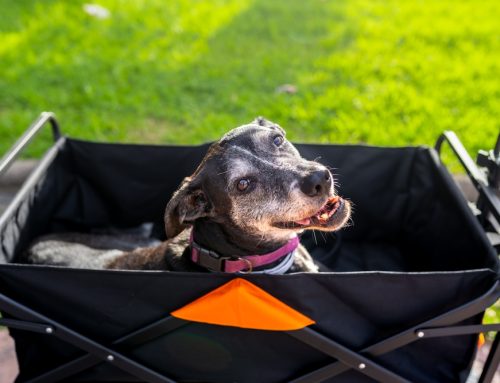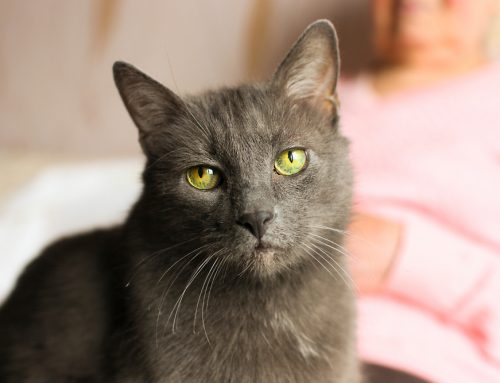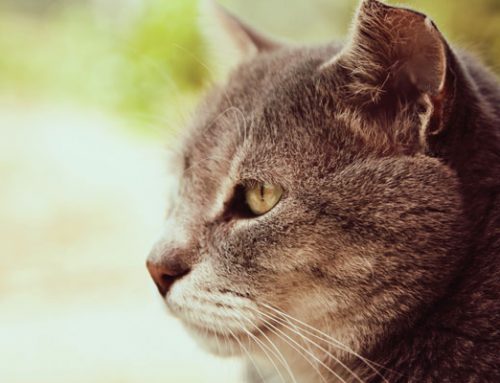It’s no secret that Americans love their pets. If you had to put a number on how much we adore our furry, feathered, and scaled companions, that number would be more than 75 billion—that’s right, billion with a “b”—which is the amount Americans are projected to spend on their pets in 2019. The money spent on pet care is due in part to our pets living longer, but the longer lifespan comes with a variety of age-related health issues. As your pet enters her golden years, follow these six ways to ensure she stays in tip-top shape.
#1: Double up on veterinary exams
Everyone wishes for more time spent with beloved family members, whether or not they’re furry, and regular veterinary care can help your pet live a longer, healthier life. With thorough physical exams and baseline blood work, our veterinary team will monitor your furry friend’s health status, ideally twice per year. Routine care also allows us to detect an older pet’s medical issues, which is critical for catching a disease before it is too advanced for treatment, and which offers a better prognosis.
#2: Brush up on dental care
By the time your pet reaches 3 years of age, she likely has a buildup of plaque and tartar that contributes to gingivitis and dental disease. As she reaches senior status, that buildup can cause many serious health issues, such as tooth-root abscesses, loose teeth, oral pain, bleeding gums, bone loss, and systemic bacterial infection, that can harm not only your pet’s mouth, but also her heart, kidneys, and liver. Poor dental hygiene is painful, which can make your pet lose her appetite. For help keeping your pet’s pearly whites plaque-free, check out our blog post.
#3: Spice up mental enrichment
Like people, pets can lose their mental sharpness with age. To battle doggy dementia and kitty cognitive dysfunction, engage in a pet-friendly version of a crossword puzzle. Try these brain-busters:
- Food puzzles — Make your pet work for her daily meal by using food puzzles. You don’t need to shell out big bucks for fancy food puzzles; instead, create your own at home. For smaller dogs and cats, ensure your food-puzzle designs are compatible with tiny paws.
- Hidden treats — Keep your pet’s mind occupied with long-lasting treats hidden in a challenging treat dispenser, such as a KONG Wobbler.
- Interactive toys — Give your pet hours of entertainment with interactive toys. Robotic mice encourage cats to engage their predatory nature, stalking and pouncing on their prey, while an automatic ball launcher will prompt pooches to play.
- Tricks — Never stop learning. Teach your pet new tricks with daily training sessions to keep her mind sharp.
#4: Enjoy regular exercise
As pets age, they can fall victim to a vicious cycle of weight gain and osteoarthritis pain. Keep your pet lean and active with regular exercise to avoid excess pressure on achy joints. Customize a low-impact exercise routine to accommodate her aches and pains. Your pooch’s days of intense games of fetch may be over, but she can still enjoy a leisurely stroll around the block.
#5: Feed the appropriate diet
Proper nutrition is important for pets at any life stage, but is more critical for senior pets. Many older pets are affected by chronic medical issues, which can be managed with medications, supplements, and prescription diets designed for optimal health. One big health issue seen in older pets is obesity—pun intended—because they are less active and burn fewer calories, but their daily caloric intake is still the same. Those extra calories pack on the pounds, which make mobility difficult. For help choosing the best diet for your senior pet’s needs, schedule a nutritional consultation.
#6: Make necessary environmental changes

People make changes in their homes and yards, such as moving to homes without stairs, smaller lawns, and bathtub handrails, to accommodate their aging bodies. Your aging pet needs the same level of support. Provide ramps into your home or vehicle, or up to your pet’s favorite piece of furniture. Create cozy resting areas and resource locations on each home level so your pet doesn’t need to climb up and down stairs for a nap. For kitties, invest in low-sided litter boxes to avoid the osteoarthritis pain of leaping into a tall box. If your home has slick wood or tile floors, put down carpet runners, because many pets struggle to grip these slick surfaces and may suffer from painful falls.
Although your pet has reached senior status, she can still enjoy many good years, with proper care. Ensure your furry friend remains in top physical and mental condition with regular checkups—give us a call to schedule her appointment.







Leave A Comment